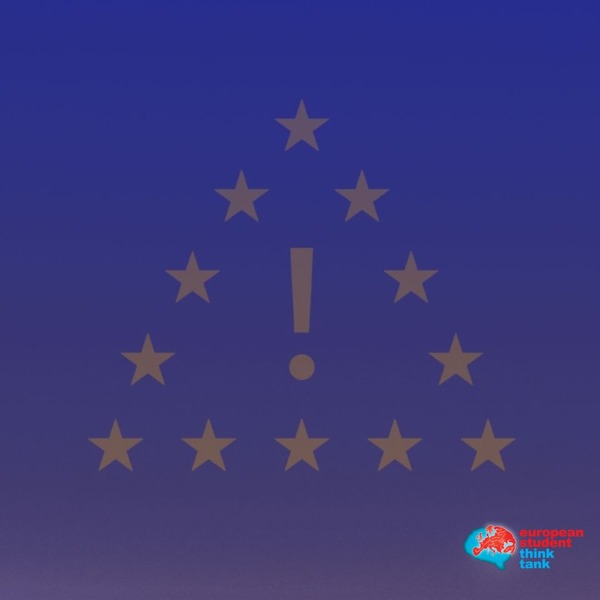
Written by: Alexandra Sima, Ambassador to Romania
Edited by: Anne Noel
Schengen is cracking under the weight of its own ideals. The Schengen Agreement, once heralded as the embodiment of a borderless and unified Europe, now teeters under the weight of mounting crises. What was designed as a testament to trust and cooperation has become a fragile experiment in an increasingly unstable world. The question is no longer whether Schengen is beneficial, but whether it can endure in its current form.
The resurgence of border controls in certain member states, justified on grounds of national security and migration management, has reignited a broader debate on the future of Schengen. While proponents argue that the agreement remains vital to economic stability and European unity, critics contend that the current framework is ill-equipped to address emerging security challenges. This discourse is not merely a technical policy matter but a reflection of deeper tensions within the European Union (EU) regarding sovereignty, security, and solidarity. In 2025 alone, countries such as Austria, Germany, France, Denmark, and Italy have reinstated internal border checks in response to increased irregular migration, terrorism threats, and the ongoing impacts of conflicts in Ukraine and the Middle East–underscoring the growing pressure on Schengen’s foundational principle of open borders (AXA Schengen, 2025).
The Case for Reintroducing Border Controls
The ideal of a borderless Europe has collided with the realities of modern security threats and migration pressures. The same mechanisms that enable economic prosperity and political unity have introduced new vulnerabilities, raising legitimate concerns about the effectiveness of Schengen’s enforcement mechanisms. While the argument for maintaining Schengen emphasizes its economic and social benefits, it is crucial to address the opposing perspectives: that reintroducing internal border controls may, in some cases, be a necessary response to contemporary challenges.
- Security Concerns
The absence of internal border control has inadvertently facilitated the activities of criminal organizations and extremist groups, enabling them to transport illicit goods, weapons, and personnel with minimal oversight. Reports from the United Nations Office on Drugs and Crime (UNODC) have documented the growing interconnections between organized crime and terrorism, particularly in human trafficking, arms smuggling, and drug distribution. The ease of movement within the Schengen Area has contributed to the operational capabilities of these groups, necessitating more stringent preventive measures (United Nations, 2020).
As early as 2025, several Schengen countries–including Austria, France, Germany, and Italy–had reintroduced internal border checks, citing terrorism risks and irregular migration as key justification. Germany extended its border controls through September 2025 in response to surging asylum claims, while Italy implemented new checks at its border with Slovenia to limit unauthorized crossings (Verge, V. 2025). Germany’s decision to reintroduce checks followed a series of high-profile incidents, including the August 2024 Solingen stabbing attack, in which a rejected Syrian asylum seeker killed three people and injured eight others. The attacker had entered the EU irregularly, and the act was later claimed by the Islamic State of Iraq and Syria (ISIS) (Lukiv, J. 2024). This incident heightened public and governmental concern over border security, especially in the light of broader migration pressures. In the same year, Germany recorded over 266,000 cases of illegal entry and residence, placing further strain on national security and asylum systems (Nia, O. T. 2024).
Similarly, France’s targeted border restrictions aimed at disrupting terrorist networks, highlight the inadequacy of Schengen’s current enforcement mechanisms (Verge, V. 2025). Implemented on November 1, 2024, and currently set to continue until April 30, 2025–with expectations of renewal (Business Today Desk, 2025), these measures involve intensified checks along borders with Belgium, Germany, Spain, and Italy, as well as at major train stations and airports (Khandelwal, M. 2025). The focus on intelligence-led enforcement highlights how France seeks to mitigate the movement of high-risk individuals who exploit the Schengen area’s open borders. These actions reflect a broader recognition that the open-border model, in its current form, lacks sufficient safeguards against emerging security threats. Critics rightly point out that Schengen lacks robust enforcement tools to effectively counter transnational crime and terrorism. The reliance on temporary border controls–initially intended as an exception–risks becoming a permanent fixture, undermining the fundamental principles of the agreement (United Nations, 2020).
Rather than dismantling Schengen altogether, a more pragmatic approach would involve reinforcing existing security mechanisms while preserving the core principle of free movement. Strengthening intelligence coordination, expanding biometric screening, and implementing more rigorous vetting procedures at external borders are necessary steps to ensure that security and openness can coexist. The future of Schengen depends on the EU’s ability to adapt its policies to address evolving threats without retreating into a fragmented, protectionist approach (Verge, V. 2025).
- Migration Management
While the Schengen Agreement has facilitated economic and social integration, it has also intensified pressures on Europe’s migration management systems, particularly in frontline states. The past decade has witnessed unprecedented migration flows, straining already overburdened asylum and border control mechanisms. In 2023 alone, Europe received approximately 4.5 million immigrants, including one million who entered irregularly. The ongoing displacement of Ukranians further exacerbates the situation, with the United Nations High Commissioner for Refugees (UNHCR) estimating that 6.9 million refugees had fled Ukraine by early 2025 (UNHCR, 2025).
Southern European states, particularly Italy, Greece, and Spain, continue to bear the brunt of migration inflows. Their geographical location makes them primary entry points for migrants arriving from Africa and the Middle East (Gibson, C. 2025). Frontex data indicates that early in 2025, illegal crossings via the Central Mediterranean route surged by 48% compared to the previous year (Frontex, 2025). Overcrowded reception centers and overstretched asylum processes highlight the inability of current mechanisms to cope with sustained migration pressures.
The influx of migrants has fueled rising anti-immigration sentiment across Europe. Concerns over crime, public services, and integration policies have strengthened populist and right-wing parties, as seen in Germany’s 2022 state elections, where the Alternative für Deutschland (AfD) gained significant traction. The party’s momentum continued into the 2025 federal elections, where it secured 20.8% of the vote and became the second-largest party in the Bundestag, the German national parliament (ECRE, 2025). The AfD’s campaign focused heavily on migration, calling for a complete halt to immigration from non-EU countries, stricter border controls, and the rejection of asylum seekers at the border (Wallis, E. 2025).
Similar political shifts have emerged in other EU states, reflecting growing dissatisfaction with existing migration policies. For example, in Italy, the Lega Nord has been vocal about its anti-immigration stance (Understanding Italy, 2025), and in France, the Rassemblement National (RN) has also gained traction on similar issues. Marine Le Pen, the long-time leader of the RN and a central figure in French far-right politics, has been known for her headline positions on immigration, security, and national sovereignty. Her platform has long included calls for stricter immigration policies, stronger border controls, and a halt to immigration from non-EU countries (Emmanuel, C. 2024). However, in March 2025, Le Pen was found guilty of embezzling EU funds and banned from running for public office for five years. This conviction has dealt a serious blow to her political ambitions, including a potential 2027 presidential bid, and triggered internal turmoil within the RN. Her removal from the political stage has shaken the RN and raised questions about the future of France’s far-right movement, though her platform continues to resonate with voters concerned about security and integration (Abboud, L. 2025).
The growing influence of nationalist and Euroskeptic movements has reshaped the political discourse in Europe, challenging the principles of the Schengen Agreement. Critics argue that Schengen undermines national sovereignty by limiting states’ ability to regulate borders and internal affairs. These movements often frame free movement as incompatible with national security and cultural cohesion, reinforcing calls for stricter control over migration and asylum policy.
These narratives often persist despite statistical evidence showing that migrants generally commit less crime than native populations (Crawford, K. 2023). The disconnect is largely fueled by media sensationalism and political rhetoric, which selectively highlight incidents involving migrants while ignoring broader trends. This contributes to a climate of fear and reinforces racialized stereotypes, distorting public perception and driving policy responses that may not be grounded in empirical reality.
The Case for Maintaining Schengen
- Economic Benefits of the Schengen Agreement
The Schengen Agreement has been a cornerstone of European economic integration, facilitating trade, attracting foreign direct investment (FDI), and promoting labour mobility. By dismantling internal border controls, it has lowered transaction costs, enhanced market efficiency, and contributed to gross domestic product (GDP) expansion across member states (Romania Insider, 2025). These economic advantages underscore Schengen’s pivotal role in fostering cohesion within the European Single Market.
The abolition of border checks within the Schengen Area has significantly strengthened trade by mitigating logistical constraints, reducing transportation expenditures, and eliminating bureaucratic impediments associated with custom procedures. Empirical research indicates that Schengen has augmented trade among member states by approximately 2.81%, an effect analogous to a tariff reduction of 0.46-1.02 percentage points (Felbermayr, G., Gröschl, J., Steinwachs, T., 2017). These efficiencies are particularly pronounced in sectors reliant on just-in-time supply chains, such as automotive manufacturing, pharmaceuticals, and agribusiness, where seamless cross-border movement is imperative for operational continuity and competitiveness.
Beyond trade facilitation, Schengen has enhanced the investment climate across its member states. The frictionless movement of goods and labour alleviates operational uncertainties for multinational enterprises, incentivizing capital inflows into strategic economic sectors such as manufacturing, logistics, technology, and financial services (Felbermayr, G., Gröschl, J., Steinwachs, T. 2017). The absence of internal border controls reduces the costs associated with cross-border production, fostering the establishment of regional supply chains and logistical hubs within Schengen states–for example, automotive manufacturers benefit from streamlined sourcing across borders, while Germany and the Netherlands have expanded their roles as distribution centers. Similarly, tech industries in France and Germany capitalize on talent mobility (Silva, J. 2025), and the recent inclusion of Romania and Bulgaria in 2025 has unlocked new financial sector investment opportunities (Romania Insider, 2025). This integrated economic landscape enhances Europe’s global competitiveness and reinforces the attractiveness of the region as an investment destination.
Moreover, the free movement of labour has been instrumental in rectifying labour market asymmetries across Schengen states. By enabling workforce mobility, the agreement has alleviated skill shortages in high-demand industries while mitigating unemployment disparities in others (Delivet, P. 2013). Migrant workers from Central and Eastern European have been indispensable in sustaining key sectors such as construction, agriculture, and healthcare in Western European economies. Additionally, remittance flows from these workers to their countries of origin have bolstered domestic consumption and economic development, further reinforcing intra-European financial interdependence (Romania Insider, 2025).
- Political and Social Cohesion
The Schengen Agreement has been instrumental in advancing political and social integration within the EU by institutionalizing cross-border cooperation and promoting a shared European identity (European Commision, 2025). By abolishing internal border controls, it has not only enabled the free movement of individuals but also facilitated cultural exchange, educational opportunities, and labour mobility. These interactions have been central to fostering interpersonal ties and mutual recognition among European citizens, thereby reinforcing democratic values and collective belonging (European Movement, 2016).
The enhanced social connectivity enabled by Schengen has produced tangible benefits across member states. Programmes such as Erasmus+ have expanded student mobility, while labour migration and cross-border commuting–particularly in economically integrated regions such as the Benelux countries or the Franco-German border–have become routine features of European life (Parenti, A. & Tealdi, C. 2019). These patterns of mobility encourage intercultural understanding, reduce prejudice, and strengthen civil society across borders. Furthermore, the symbolic value of Schengen as a facilitator of everyday interaction has contributed to a positive perception of the EU’s integrative capacity, particularly among younger demographic groups (SchengenVisaInfo, 2025).
Reintroducing border controls would mark a significant reversal of these integrative efforts, potentially weakening the trust and solidarity cultivated over decades of European collaboration. Measures implemented by countries such as France, Austria, and Germany–initially framed as temporary responses–have become increasingly normalized, raising concerns about the erosion of trust and solidarity within the EU (European Commision, 2025). Such actions represent a departure from the principles of openness and collective responsibility that underpin the Schengen framework, and could exacerbate intra-EU political fragmentation by privileging unilateral national responses over coordinated action (European Movement, 2016).
Despite the pressures Schengen has faced, public opinion largely remains in favor of maintaining freedom of movement. According to a Eurobarometer survey, the unrestricted exchange of people, goods, and services is widely regarded as one of the EU’s most valuable achievements, second only to its role in maintaining peace (European Commision, 2024). This indicates that, while policy responses may fluctuate in the face of external pressures, the foundational ideals of Schengen continue to hold strong normative appeal across the EU populace.
- Security Cooperation and Alternative Reforms
The Schengen Agreement has significantly enhanced European security coordination through intelligence-sharing, cross-border policing, and the operational role of Frontex. This includes Frontex’s deployment of border guards, coordination of surveillance and search-and-rescue missions at the EU’s external borders, and logistical support for member states during migration or security crises (Frontex, 2025). These mechanisms ensure that the benefits of free movement are maintained without compromising security.
A key pillar of Schengen’s security framework is the Schengen Information System (SIS), which enables real-time data exchange among member states. This system has been instrumental in tracking criminals, preventing unauthorized entries, and responding to security threats. Additionally, strengthened cross-border policing allows law enforcement agencies to share intelligence, conduct joint operations, and pursue suspects beyond national jurisdictions, bolstering efforts against organized crime and terrorism (European Commission, 2025).
Frontex, the European Border and Coast Agency, plays a central role in securing the EU’s external frontiers. It provides operational support, surveillance, and crisis management, helping member states manage migration and combat cross-border crime. Standardized training and intelligence-sharing further reinforce border security while preserving Schengen’s integrity (Frontex, 2019). However, Frontex has also faced significant criticism, including allegations of human rights violation such as unlawful pushbacks, concerns over transparency and internal management, and debates about its effectiveness and growing influence on EU border policy (Apelblat, M. 2022). These tensions underscore the need for greater accountability and oversight to ensure that security efforts align with fundamental rights and the principles of the Schengen Agreement.
While concerns about Frontex’s operations and effectiveness persist, the border solution does not lie in dismantling the Schengen framework. Reintroducing internal border controls would weaken European integration without addressing the root causes of security challenges. Instead, enhancing intelligence cooperation, reinforcing external borders, and expanding Frontex’s mandate offer more effective solutions. Schengen has demonstrated that security and free movement can coexist through strategic coordination rather than restrictive border policies.
Possible Reforms and Solutions for the Schengen Agreement and Frontex
To address these challenges while maintaining the core benefits of the Schengen Agreement, several reforms and solutions have been proposed by policymakers, researchers, and civil society actors. These proposals aim to strengthen the system without reverting to widespread internal border controls.
- Improving Intelligence Cooperation
- Integrating Data Systems: Ensuring interoperability between the SIS, the European Travel Information and Authorization System (ETIAS), and other EU-wide databases (European Union, 2025). A more unified information architecture would strengthen the capacity to monitor security threats and migration patterns.
- Joint Intelligence Units: Creating permanent, cross-national intelligence units focused on counter-terrorism, organized crime, and cyber threats (European Union, 2025). These would allow for more efficient intelligence flow and rapid coordinated responses.
- Addressing Human Rights Concerns
- Independent Oversight Mechanisms: Establishing robust, independent bodies to monitor Frontex’s actions and investigate allegations of misconduct (Frontex, 2024). Oversight mechanisms can help ensure that border enforcement aligns with human rights obligations.
- Training Programs: Mandating comprehensive human rights and refugee law training for Frontex personnel and national border agents to reduce the risk of abuse and increase legal compliance (Frontex, 2024).
- Strengthening Governance and Accountability
- Structured Governance Framework: Establishing a more coordinated governance framework for Schengen to align policies on border management and migration while maintaining national flexibility (European Union, 2025).
- Regular Schengen Council Meetings: Institutionalizing regular meetings between Schengen states to review common threats, coordinate strategies, and build mutual trust (European Union, 2025).
These reforms and proposals demonstrate that the durability of Schengen lies not in dismantling the system, but in its evolution. By reinforcing external borders, improving data sharing and cooperation, ensuring accountability in enforcement, and investing in governance, the EU can maintain both security and freedom of movement. Ultimately, strategic coordination–not internal fragmentation–will determine the future resilience of the Schengen Area.
Conclusion
The Schengen Agreement embodies both Europe’s highest ambitions and its most pressing challenges. While mounting concerns over security and migration have led to renewed calls for internal border controls, these pressures should not eclipse the enduring value of Schengen to European integration. The agreement has facilitated unprecedented economic interdependence, labor mobility, and political solidarity, while symbolizing the EU’s commitment to openness and cooperation. Its benefits–from boosting trade and investment to fostering social cohesion–remain deeply embedded in the European project and widely supported by its citizens.
The solution to Schengen’s current crisis does not lie in dismantling the framework, but in adapting it to meet contemporary realities. A return to internal divisions would not resolve Europe’s challenges but rather signal a retreat from cooperation. The task ahead is not to abandon Schengen but to reform it–ensuring that it remains a viable framework for a secure, integrated, and resilient Europe.
Sources
Abboud, Leila. (2025). Has the court ended Marine Le Pen’s political career and what happens to her RN party now?. https://www.irishtimes.com/world/europe/2025/04/01/marine-le-pen-french-far-right-paris-court-ruling-politics/
Apelblat, M. (2022). EU scandal: What went wrong at Frontex?. https://www.brusselstimes.com/220997/eu-scandal-what-went-wrong-at-frontex
AXA Schengen. (2025). Which Schengen countries have reintroduced border controls in 2025?. https://www.axa-schengen.com/en/news/border-controls-schengen
Business Today Desk. (2025). Schengen border checks return in 2025: Travelers warned to carry IDs, buffer time while travelling to these nations. https://www.businesstoday.in/nri/visa/story/schengen-border-checks-return-in-2025-travelers-warned-to-carry-ids-buffer-time-while-travelling-to-these-nations-474038-2025-04-29
Crawford, K. (2023). The mythical tie between immigration and crime. https://siepr.stanford.edu/news/mythical-tie-between-immigration-and-crime
Davoli, A. (2024). Police cooperation. https://www.europarl.europa.eu/factsheets/en/sheet/156/police-cooperation
Delivet, Philippe. (2024). The Free Movement of People in the European Union: principle, stakes and challenges. https://www.robert-schuman.eu/en/european-issues/0312-the-free-movement-of-people-in-the-european-union-principle-stakes-and-challenges
Emmanuel, C. (2024). Marine Le Pen: an influential political figure in France. https://www.ump-lycees.fr/en/marine-le-pen-an-influential-political-figure-in-france
European Commision. (2024). New Eurobarometers reveal that EU citizens and businesses highly appreciate Schengen. https://home-affairs.ec.europa.eu/news/new-eurobarometers-reveal-eu-citizens-and-businesses-highly-appreciate-schengen-2024-10-08_en
European Commision. (2025). Schengen area. https://home-affairs.ec.europa.eu/policies/schengen/schengen-area_en
European Commission. (2025). Temporary Reintroduction of Border Control. https://home-affairs.ec.europa.eu/policies/schengen/schengen-area/temporary-reintroduction-border-control_en
European Commission. (2025). What is SIS and how does it work?. https://home-affairs.ec.europa.eu/policies/schengen/schengen-information-system/what-sis-and-how-does-it-work_en
European Council on Refugees and Exiles. (2025). GERMANY: Federal election 2025. https://ecre.org/germany-federal-election-2025/
European Movement. (2016). Free Movement and Schengen: A No Borders Europe. https://europeanmovement.eu/policy/free-movement-and-schengen-a-no-borders-europe-2/
European Union. (2025). Communication from the Commission to the European Parliament, the European Council, the Council, the European Economic and Social Committee and the Committee of the Regions. https://eur-lex.europa.eu/legal-content/EN/TXT/?uri=CELEX:52025DC0185#document3
Felbermayr, G., Gröschl, J., Steinwachs, T. (2017). The Trade Effects of Border Controls: Evidence from the European Schengen Agreement*. https://onlinelibrary.wiley.com/doi/full/10.1111/jcms.12603
Frontex. (2025). Monthly irregular migration statistics – February 2025. https://www.frontex.europa.eu/media-centre/news/news-release/monthly-irregular-migration-statistics-february-2025-dBo7hG#:~:text=The%20number%20of%20irregular%20border,Mediterranean%20route%20defied%20the%20trend
Frontex. (2025). Operations. https://www.frontex.europa.eu/what-we-do/operations/operations/
Frontex. (2024). STRATEGIC RISK ANALYSIS REPORT. https://prd.frontex.europa.eu/wp-content/uploads/strategic-risk-analysis-2024-report.pdf
Frontex. (2019). Who we are. https://www.frontex.europa.eu/about-frontex/who-we-are/tasks-mission/
Gibson, C. (2025). Future Migration Policies: Divides and Bridges. https://theowp.org/reports/future-migration-policies-divides-and-bridges/
Khandelwal, M. (2025). Schengen Travel Alert: 10 Countries Reinstate Border Checks in 2025. https://travelobiz.com/schengen-travel-alert-2025-border-checks-reinstated/
Lukiv, J. (2024). Man surrenders and confesses to Germany stabbing attack. https://www.bbc.com/news/articles/crlr2z23ykno
Nia, O. T. (2024). Germany to extend border controls to curb illegal migration. https://www.aa.com.tr/en/europe/germany-to-extend-border-controls-to-curb-illegal-migration/3437665
Parenti, A., Tealdi, C. (2019). Does the Implementation of the Schengen Agreement Boost Cross-Border Commuting? Evidence from Switzerland. https://docs.iza.org/dp12754.pdf
Romania Insider. (2025). Guest post: Schengen – the great benefits for Romania. https://www.romania-insider.com/guest-post-romania-schengen-accession-benefits
SchengenVisaInfo. (2025). Schengen Agreement & Acquis: History, Functionality, and Benefits. https://schengenvisainfo.com/schengen-agreement/
Silva, J. (2025). Upcoming Schengen Countries List: New Member States. https://www.savoryandpartners.com/blog/upcoming-schengen-countries-list
United Nations. (2020). Cross-border links between terrorists, organized crime, underscore need for coherent global response. https://news.un.org/en/story/2020/08/1069672
United Nations High Commissioner for Refugees. (2025). Ukraine Refugee Situation. https://data.unhcr.org/en/situations/ukraine
Understanding Italy. (2025). Understanding the Italian Immigration Crisis: Causes and Impacts. https://www.understandingitaly.com/italian-immigration-crisis
Verge, V. (2025). Ten Schengen Countries Reinstate Border Controls, Redefining Travel in 2025. https://www.visaverge.com/travelrequirements/ten-schengen-countries-reinstate-border-controls-redefining-travel-in-2025
Wallis, E. (2025). German elections: What does the AfD say about migration?. https://www.infomigrants.net/en/post/62349/german-elections-what-does-the-afd-say-about-migration

 The ’Ndrangheta’s Infiltration and Threat to European Institutions
The ’Ndrangheta’s Infiltration and Threat to European Institutions  From Paper to Practice: How Grassroots Norms Undermine Gender Rights in Pakistan
From Paper to Practice: How Grassroots Norms Undermine Gender Rights in Pakistan  Exploited Childhoods: The Role of Global Corporations in Perpetuating and Mitigating Child Labour
Exploited Childhoods: The Role of Global Corporations in Perpetuating and Mitigating Child Labour  Human Rights Challenges in Addressing SLAPPs in Media, NGOs and Journalism in the EU
Human Rights Challenges in Addressing SLAPPs in Media, NGOs and Journalism in the EU 


